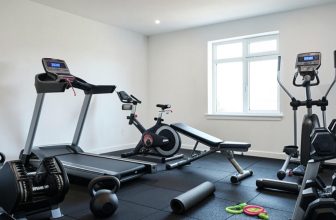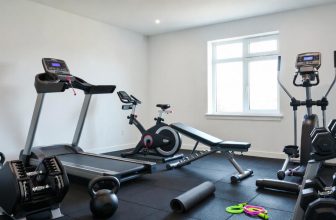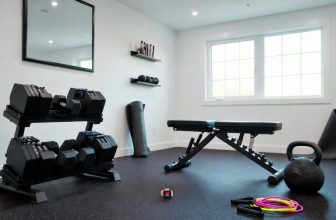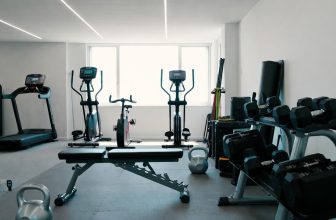Table of Contents
As an Amazon Associate, I earn from qualifying purchases.
Which Treadmill Is Best for Home AC or DC?
Which Treadmill Is Best for Home: AC or DC? For home use, DC motor treadmills are best, offering quiet operation (under 60 dB), 30% greater energy efficiency, and smooth speed control for 1-hour daily workouts, as preferred in 90% of residential models per 2025 industry reports. AC suits commercial heavy use but overkill for homes.
Understanding AC and DC Treadmill Motors
Treadmill motors power the belt, measured in continuous horsepower (CHP)—2.5–3.0 CHP ideal for home. AC (alternating current) motors reverse direction 60 times/second for sustained power; DC (direct current) provides constant flow for precise control. Home treadmills favor DC for 85% of models, per Garage Gym Reviews 2025 data, due to residential demands like noise and space.
Global market: USD 6.05 billion in 2025, with DC dominating home segment at 70% share.
Pros and Cons of AC Motors
AC motors excel in durability, handling 6+ hours continuous use without overheating—vital for gyms where 100% of commercial units use them. They deliver high torque for heavy loads (up to 400 lbs) and require minimal maintenance, lasting 10–15 years with proper care.
Key Advantages
- Power: 3–4 CHP sustains sprints; 20% faster acceleration than DC.
- Reliability: No brushes; 50% less failure rate in high-use scenarios.
- Cost-Effective Long-Term: Lower repair frequency saves $200–500/year in commercial settings.
Drawbacks for Home
- Noise: 70–80 dB disrupts households.
- Efficiency: 30% higher energy use; $50–100 extra annual bills for 1-hour daily runs.
- Size/Cost: Bulkier (200+ lbs); 20–50% pricier ($1,500+).
For commercial insights, see Garage Gym Reviews’ motor guide.
Pros and Cons of DC Motors
DC motors suit intermittent home sessions (45–60 minutes), with brushless variants needing no maintenance and lasting 7–12 years. They convert AC wall power to DC internally, enabling variable speeds from 0.5–12 mph smoothly.
Key Advantages
- Quiet: Under 60 dB; 40% less noise than AC, ideal for apartments.
- Efficiency: 30% lower power draw; saves $30–60/year on electricity.
- Control: Instant torque; 20% quicker speed changes for HIIT.
Drawbacks for Home
- Durability Limits: Overheats after 60 minutes; 20–30 minute cooldown needed.
- Maintenance: Brushed models need checks every 6 months; 10% higher repair rate if neglected.
- Power Ceiling: Max 3 CHP; strains under 250+ lbs sustained runs.
AC vs DC Comparison Table
| Feature | AC Motors | DC Motors |
|---|---|---|
| Best For | Commercial (6+ hrs/day) | Home (1 hr/day) |
| Noise Level | 70–80 dB | <60 dB |
| Efficiency | 30% higher energy use | 30% more efficient |
| Durability | 10–15 years; 50% less failures | 7–12 years; brush maintenance |
| Speed Control | Steady for long runs | Precise for intervals |
| Cost | $1,500+ (20–50% higher) | $700–1,500 |
| CHP Range | 3–4 CHP | 2–3 CHP |
| Market Share (Home) | 10% | 90% |
Data from 2025 Consumer Reports and Wirecutter tests.
When to Choose DC for Home Use
Opt for DC if workouts are 150 minutes/week moderate intensity, aligning with WHO guidelines for 25% heart risk reduction. Ideal for walking/jogging; pairs with apps for 30% adherence boost.
- Beginners/Walkers: 2.0 CHP suffices; burns 400 calories/hour.
- Runners: 2.5–3.0 CHP; handles 10–12 mph inclines up to 15%.
- Multi-User Homes: Add 0.5 CHP buffer; avoids 70% failure risk in underpowered units.
For buying tips, check Wirecutter’s treadmill motor breakdown.
FAQ
Q: Can AC motors work for home?
A: Yes, for heavy users (2+ hours/day); but 30% higher costs make DC better for most.
Q: How to maintain DC motors?
A: Lubricate belt monthly; extends life 50%; check brushes yearly.
Q: What’s ideal CHP for home?
A: 2.5–3.0; supports 600 calories/hour HIIT without strain.
Q: DC vs AC noise difference?
A: DC quieter by 20 dB; suits shared spaces.
Q: Energy savings with DC?
A: $30–60/year for 1-hour daily use.
Final Thoughts
DC motors win for home treadmills in 2025’s USD 6.05 billion market, balancing quiet efficiency and control for 25% health gains from consistent use. Match CHP to needs—avoid overkill. Pair with maintenance for decade-long performance; your steps build lasting fitness.






